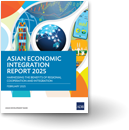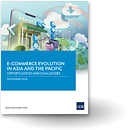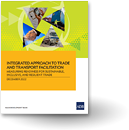Special economic zones in Myanmar: A likely success?
Following the success of Nobel Peace Laureate Aung San Suu Kyi in the recent by-elections in Myanmar and the easing of sanctions by a number of developed countries, foreign investors are increasingly expressing interest in the country.
U Thaung Lwin, co-secretary of Myanmar's investment commission, designated three large special economic zones (SEZs) and 18 smaller industrial zones and announced that the relevant implementing legislation is under revision, with the help of Japanese consultants. The formation of SEZs is expected to attract foreign investment, and would-be investors are eagerly waiting for the applicable rules to be enacted.
Taking these recent events as a background, this blog post asks which factors are likely to make a special economic zone a success and whether SEZs represent a suitable policy tool in Myanmar to help kick-start inclusive economic growth and encourage foreign investment in sectors other than natural resources.
There is no standard definition of a special economic zone, but most of them share some common characteristics. Almost all are geographically defined areas with streamlined customs procedures, tax holidays and special regulations on repatriation of profits and are often governed by a single management or administrative structure.
Most SEZs offer incentives, designed to entice investors. In particular, some frequently offered incentives include:
- Income tax holidays of up to 10 years
- Tax exemptions for imports used in the zone and exports
- VAT exemptions for imports and exports to the local market
- Land lease exemptions
Implementing such provisions is not enough, however. Certain complimentary conditions or measures are needed for success, as examples from the People's Republic of China (PRC) and India show.
The first ever SEZ in the PRC, Shenzhen, illustrates the potential of a well-managed SEZ. The per capita income in the former fishing village has grown almost ten-fold since 1990 and Shenzhen is host to the first stock exchange in the PRC.
One important additional ingredient to the above mentioned measures for the success of Shenzhen is its strategic location, close to highly developed economic centers such as Macau and Hong Kong. But the government and the private sector also invested heavily in infrastructure (inside and outside the zone) and human capital (mainly outside the zone, to provide a skilled workforce) and took bold and creative measures to adapt to issues as they arose--for example, a home purchase system and social insurance packages for workers, which were unique in PRC in the 1980s.
The Indian experience highlights some of the challenges that are associated with the establishment of SEZs. Only 124 special economic zones are operational today, falling short of the target of 500 economic zones. Actors from the private sector cite the overwhelming bureaucracy and the fact that the government did not stick to the initially promised incentives as main reasons for the failure of India's SEZs.
The most ambitious proposed SEZ in Myanmar is located in Dawei. It aims to transform an area of 97 square miles of scrubland into a complex with a steel mill, power plants and shipyards. In these early days, electricity supply seems to be the major constraint for the mega-project, but in the long run, establishing the credibility of reforms and the commitment to incentives promised to foreign investors may prove the most important challenge. Nonetheless, Myanmar has certain advantages that provide a solid basis for the successful development of SEZs. These include:
- Low wage levels and an abundant supply of labor;
- The country's strategic location between PRC and India, with access to Thailand and to ports;
- Increasing attention of international investors after the latest elections and the lifting of economic sanctions.
Therefore, a window of opportunity exists for the government in Myanmar to utilize (in cooperation with the international donor community and the private sector) the momentum for change after the elections.
If the government is able to credibly provide easily understandable long-term incentives for foreign investors together with the much needed infrastructure, Myanmar has the potential to use special economic zones to kick-start inclusive economic growth, and to attract foreign investment in non-extractive industry sectors such as manufacturing.




